
Judging by the specs, the Norco Sight and Transition Sentinel are very similar bikes. Each one has 160/150mm of suspension travel front/rear, both are offered in carbon and aluminum, the head tube angles are identical, and even the Shimano Deore builds are priced exactly the same. Of course, that’s not the whole story (it never is), and each bike offers its own take on what a capable trail bike should look like.
| Norco Sight C3 150 MX | Transition Sentinel Carbon Deore | |
|---|---|---|
| Suspension travel front/rear | 160/150mm | 160/150mm |
| Drivetrain | Shimano Deore | Shimano Deore |
| Suspension | RockShox Lyrik Select fork, RockShox Vivid 2 Select+ Air shock | RockShox Lyrik Base fork, RockShox Super Deluxe Select shock |
| Geometry* | HTA: 64° STA: 77.75° Reach: 497.5mm Chainstay: 432mm | HTA: 64° STA: 78.3° Reach: 480mm Chainstay: 448mm |
| Weight | 35.5lb (size S3) | 33.6lb (size medium) |
| Price | $4,999 (currently $3,999) | $4,999 (currently $3,499) |
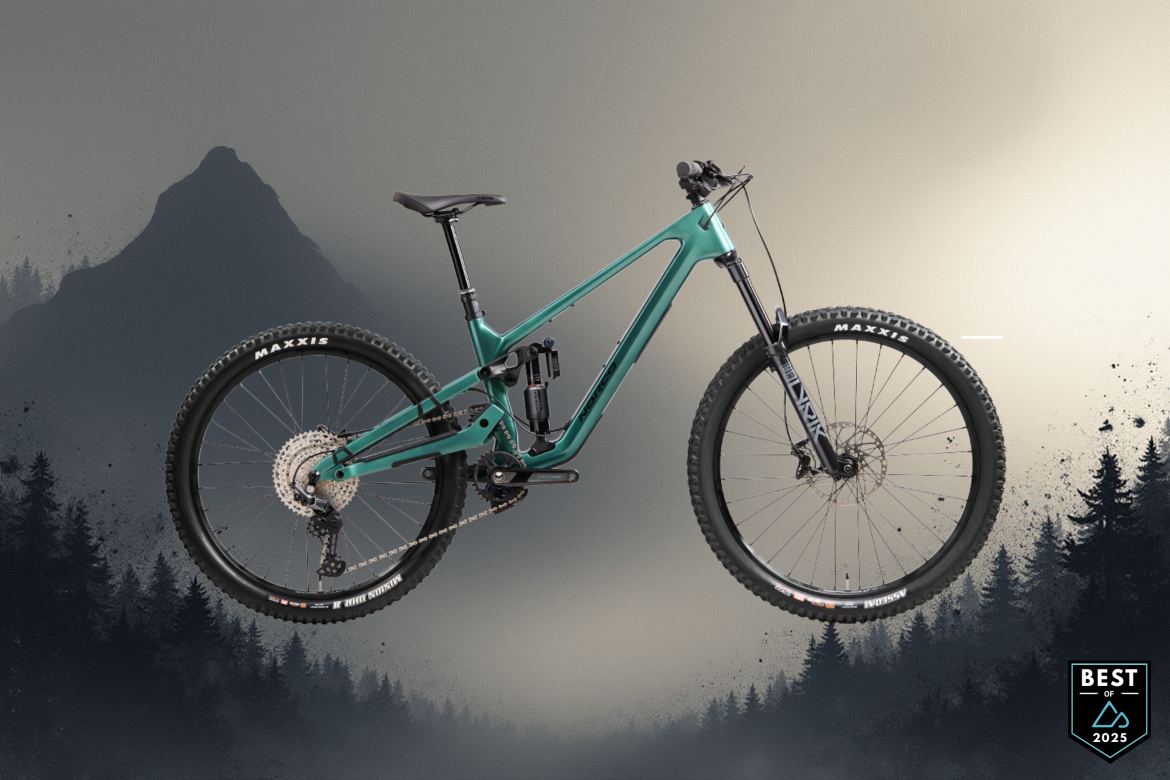
Suspension designs
Perhaps the biggest difference between the Norco Sight and Transition Sentinel is the suspension designs. Like Santa Cruz, Norco utilizes a four-bar, Virtual Pivot Point (VPP) suspension design but pairs it with an idler to deliver a high-pivot package. The result is a more rearward axle path that reduces chain growth and pedal kickback in rough terrain. The extra hardware associated with the idler adds to the bike’s 35.5lb weight, which is almost two pounds heavier than the Sentinel.
Norco calls their 2025 design VPSHP, which is an evolution of the VPS design used in the fourth version of the Norco Sight, with a higher main pivot for an even more rearward axle path. Both the Sight and Sentinel are coil-shock-compatible.
The Transition Sentinel uses the brand’s “Giddyup” suspension design, which is also a four-bar system. Transition says Giddyup is tuned to minimize chain growth, though not nearly to the degree of a high-pivot system. Overall, the suspension is designed to be simple to set up and more forgiving than others, with a wide 26-33% recommended range for sag.
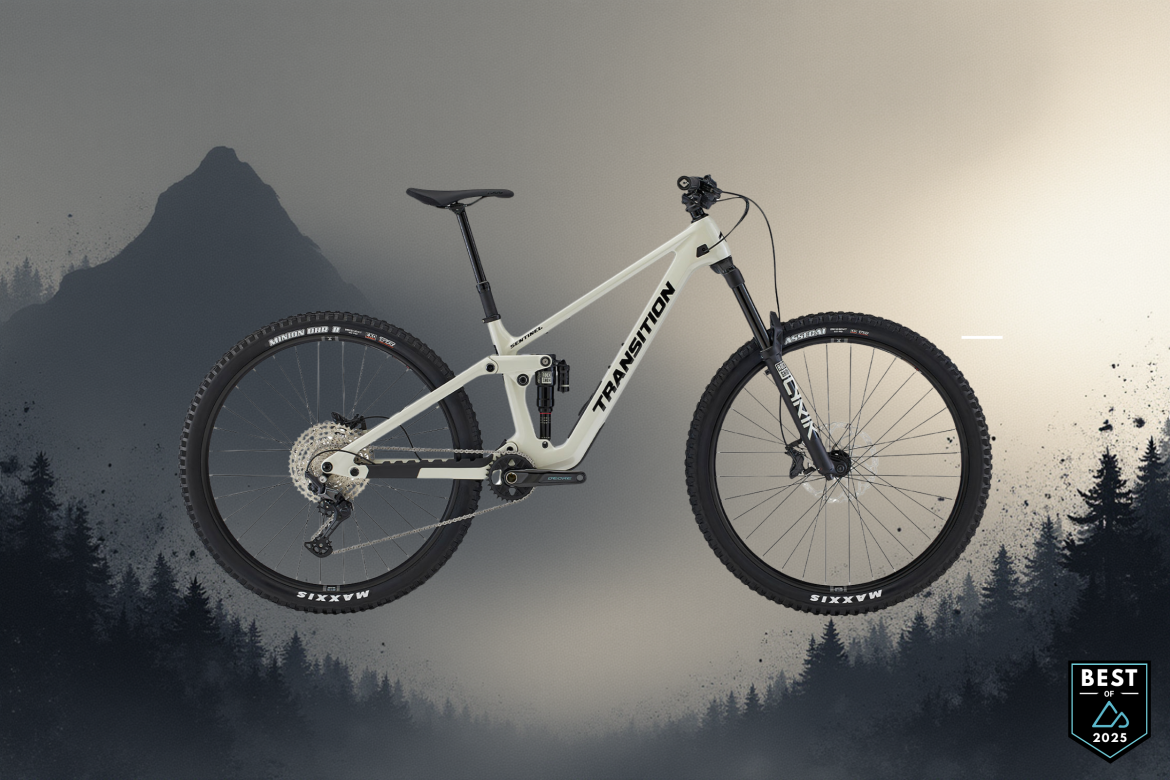
Geometry: Diverging reaches and chainstay lengths
The Transition Sentinel and Norco Sight have identical 64° head tube angles and effective seat tube angles that are within about half a degree of one another. Even their bottom bracket heights are within 3mm.
Because Norco uses a numbered sizing system as opposed to traditional small, medium, and large sizes, it’s not possible to directly compare size-specific geometry. For my analysis, I chose to compare the second largest, S4 size, to the size large Transition Sentinel. Looking at the recommended rider heights for sizes S4 and large, both show a fit for riders between 5’10 and 6’2″.
Where these two bikes really diverge is in reach and chainstay length. The Transition Sentinel is offered in six sizes from extra small to extra extra large, which allows the brand to offer a wider range of reaches, from 415mm all the way up to 530mm, compared to 422.5-522.5mm for the Sight. Nearly 20mm separates the large Sentinel from the S4 Sight, with the Sentinel reach stretching to 480mm and the Sight sitting at nearly 500mm. The longer reach on the Sight promises stability at speed, particularly on the descents.
But wait! Another factor in a bike’s stability at speed is the chainstay length, and here the Sentinel drops in with long, 448mm chainstays compared to short, 432mm stays on the Sight. Shorter stays are associated with a more playful ride feel, which should balance out the Sight overall. Both bikes vary the chainstay length based on the frame size, along with the effective seat tube angles as well.
Adaptability
The Norco Sight and Transition Sentinel can both be configured with mixed wheels, though they each take a different approach. The Sight build highlighted here ships with mixed wheels. To switch to matched 29er wheels, riders can purchase a $135 “Missing Link” kit (along with a new 29er tire and wheel, of course).
The Sentinel is mixed-wheel compatible, though all builds ship with matched wheels. Extra small builds utilize 27.5″ wheels, while sizes small and up ship with 29er wheels. Transition uses a simple flip chip to adjust the geometry for mixed wheels, resulting in a slightly slacker head tube angle and a lower bottom bracket height. Size extra small Sentinel frames are not designed for mixed wheels.
Transition Sentinel buyers can choose to increase the bike’s rear travel to 160mm by swapping out the rear shock. And though Norco offers a 160mm version of the Sight, there isn’t a way to upgrade the 150mm MX frame directly. Buyers will need to decide which version they want at the time of purchase.
Frame features
The Sentinel and Sight share many similar frame features. Both are offered in either aluminum or carbon, and both include a set of bottle mounts and accessory mounts inside the front triangle. Norco and Transition offer pretty similar warranties as well, with limited lifetime coverage and crash-replacement programs. In addition, each bike comes with guards pre-installed in crucial areas, such as the driveside chainstay and the downtube near the bottom bracket.
The Transition Sentinel has downtube storage built into its carbon frames, a system the brand calls the B.O.O.M. Box. Aluminum Sentinel bikes do not have this feature. Transition also gives buyers inserts for frame ports that aren’t in use (say, if you’re running a wireless drivetrain), a Fidlock water bottle mount, and a mud guard to protect the main pivot. The Sentinel is available in three colors — purple, gray, and white — regardless of the build.
Norco’s frame feature set includes a bash guard at the bottom bracket plus all the attendant hardware required to make the high pivot design function smoothly. There’s no in-frame storage, which could be a good thing or a bad thing, depending on whether you think having a giant hole in your downtube is a gimmick or a game changer. Norco offers an online tool called Ride Aligned that helps Sight buyers dial in their suspension settings to a tee, everything from the number of rebound clicks to tire pressure. The Sight is available in five colors, though the colors are tied to specific builds, which could be annoying depending on your color preference.
In addition to complete bikes, both Sight and Sentinel framesets are available for purchase.
The bottom line
Both the Norco Sight and Transition Sentinel are well-equipped trail bikes that share similar suspension travel, component specs, and pricing, but they take distinctly different approaches to achieving trail bike performance.
The Norco Sight’s high-pivot suspension design with its idler system promises superior bump absorption and reduced pedal kickback, making it ideal for aggressive, rough terrain riding, though you’ll pay a weight penalty. Its longer reach paired with shorter chainstays suggests a bike that’s stable at speed yet playful when you want it to be.
The Transition Sentinel, on the other hand, offers a simpler, lighter package with its Giddyup suspension, making it easier to maintain and more forgiving to set up. Its longer chainstays and moderate reach point toward balanced, confidence-inspiring handling across a variety of terrain.
This is the final matchup of the first round of competition. We’ll reveal which bike moves on to round two on November 25 when the winner takes on the winner of the Trek Fuel EX vs. Santa Cruz Bronson.













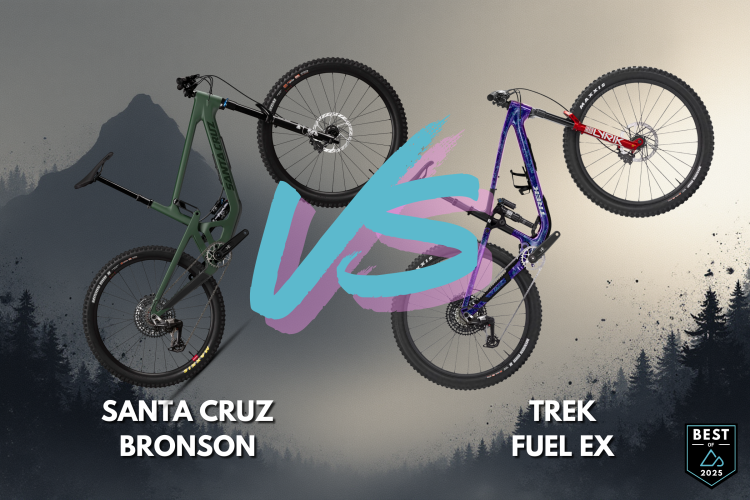
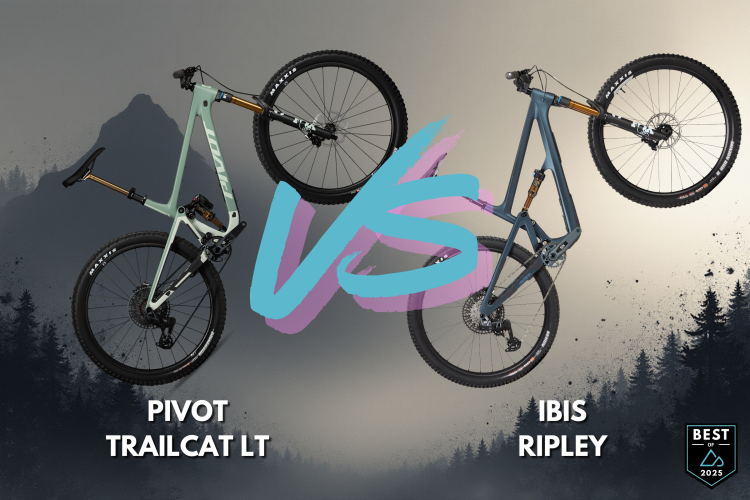

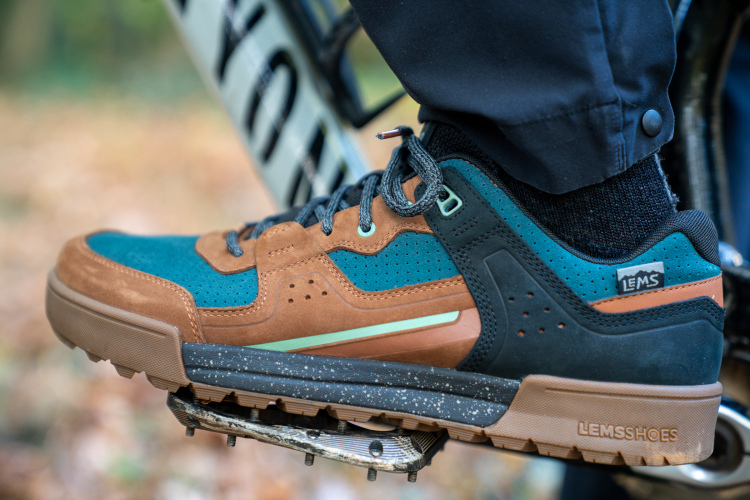
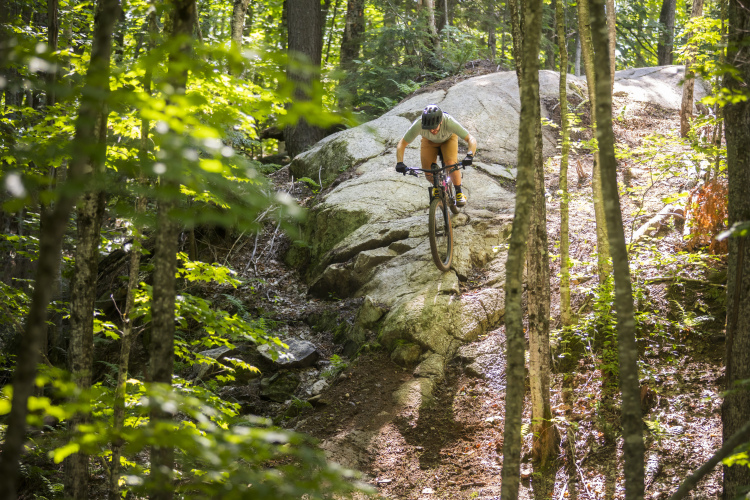
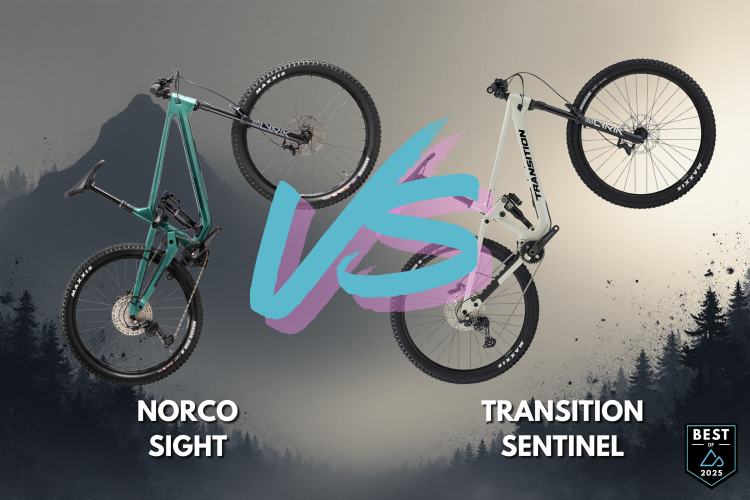

0 Comments